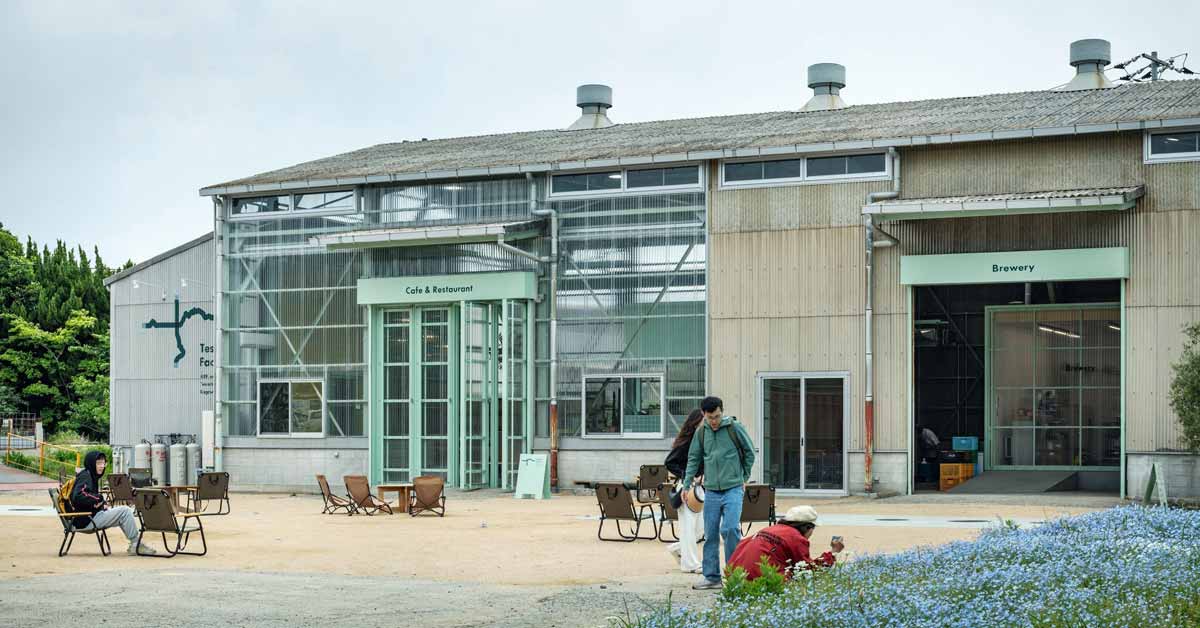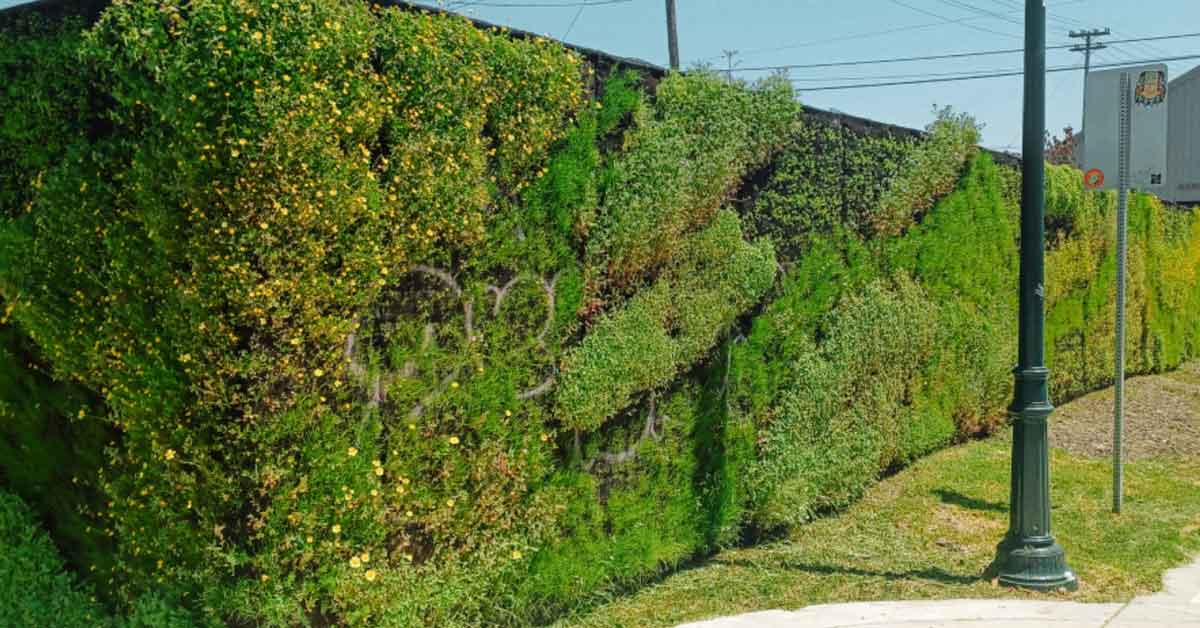Located off the coast of the Ieura Port in Japan’s Teshima Island is Tashima Factory.
What was once an ironworks factory — later called “Garbage Island” for a scourge of industrial waste and illegal dumping — is now a sleek and renovated cafe that pays homage to the site’s “trashy” history and future sustainability.
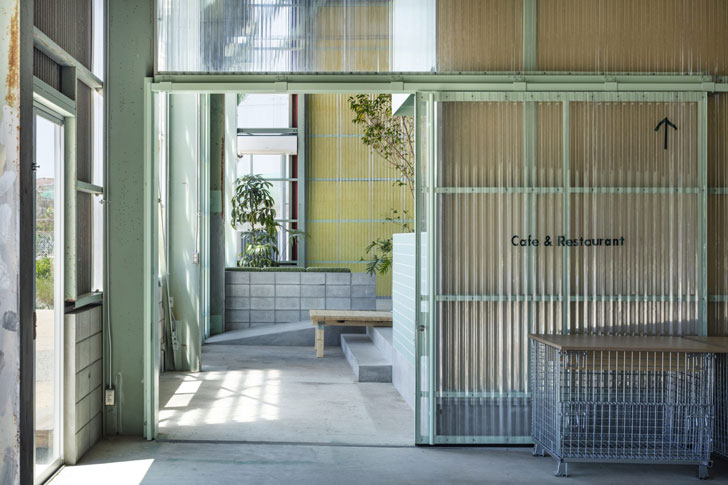
Designed by Schemata Architects, the transformation of the space has taken the original factory building and turned it into a brewery and cafeteria, split roughly in half across 360 square meters (about 3,875 square feet).
“The original single open-plan space was divided into two sections at the centre,” Schemata Architects told Dezeen. “Functional areas such as the kitchen and brewery were enclosed within boxes and positioned within these sections.”
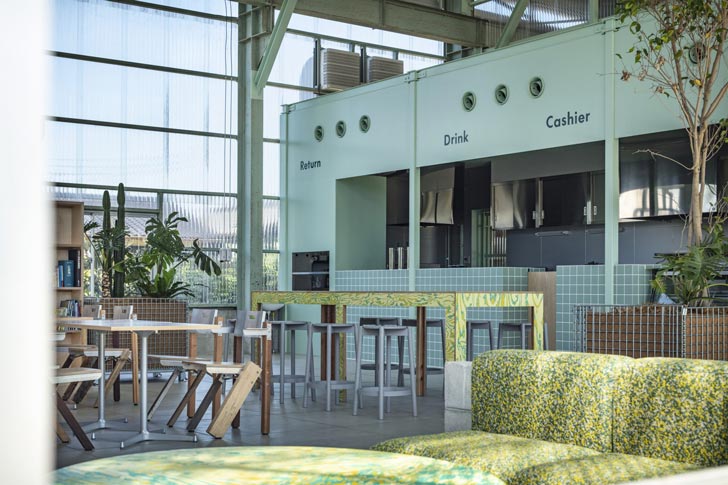
The architects also swapped the original metal walls of the facility with polycarbonate, which allows ample light into the building and creates a welcoming space for visitors.
Other features in the cafeteria include light fixtures made of reclaimed trash, furniture made in concert with local artisans, and surfaces that are emblematic of the industrial and fishing communities on the island. Everything is brought together with green and turquoise accent colors.

“The interior design features furniture and fixtures based on the color of the existing steel frame. The spherical lighting fixtures suspended from the ceiling are made from recycled marine plastic waste collected from the ocean,” the architects shared in a design statement.

“Beneath them are chairs jointly created by Dutch artist Sander Wassink and the islanders.”
The studio, which is led by architect Jo Nagasaka, told Dezeen that they wanted to use warm materials like wood, fabric, and tiles for the surfaces people touch, while maintaining and leaning into the rougher industrial atmosphere in other places.
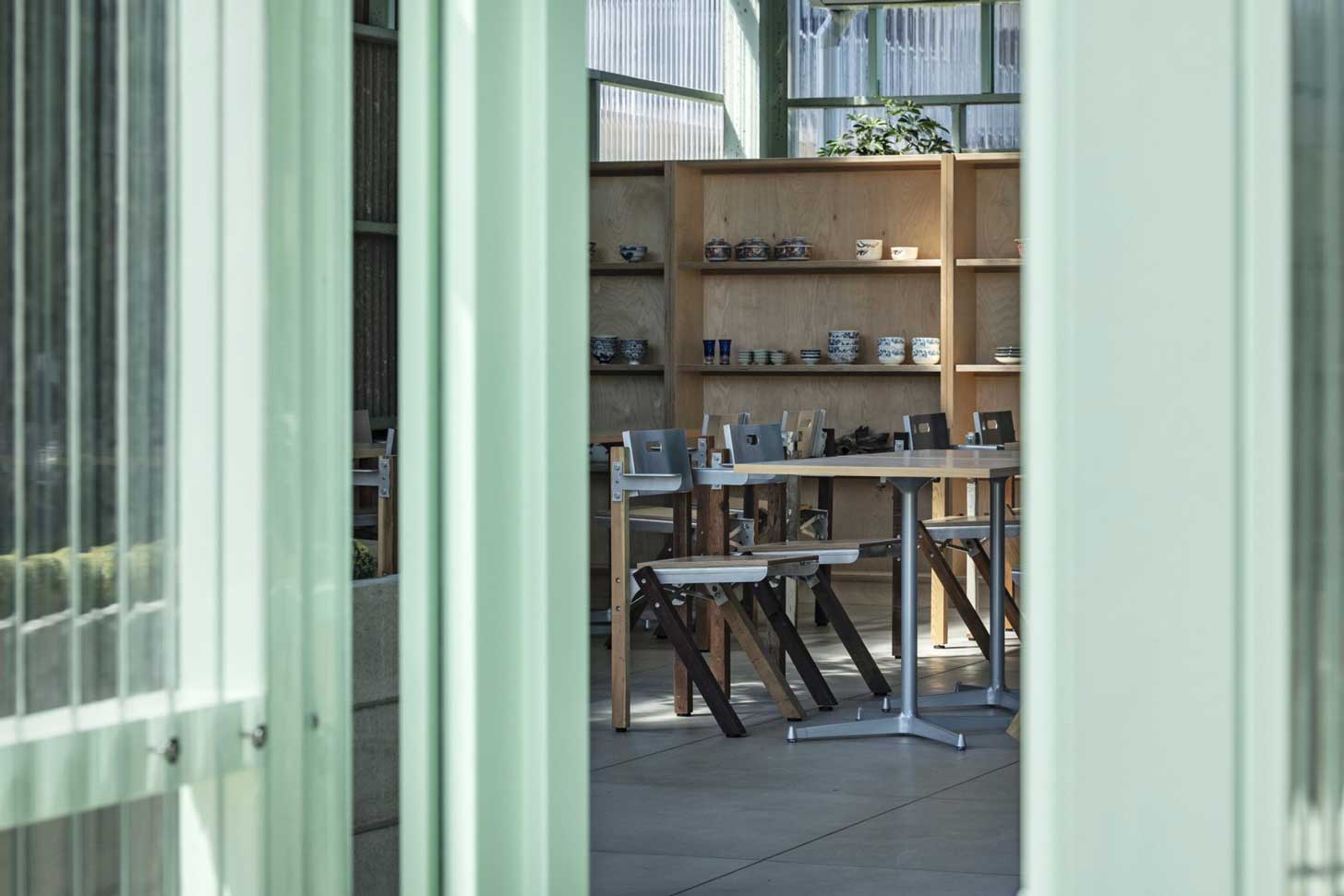
“Given the cafe’s programme, it needed to be a comfortable place to dine,” the architects said.
“However, as the existing structure was a factory, it had an overly stark, industrial feel. Yet, removing that impression entirely would diminish the appeal of the unusual experience of dining within a factory setting.”

Striking that balance between comfort and ruggedness was a key goal of the architects, and working with the people of Teshima made that possible.
The unique chairs, made by Sander Wassink and locals, are representative of this collaboration.

“Sander’s aluminium components have been employed with diverse materials across various projects,” the studio told Dezeen.
“When considering what material would suit Teshima, we concluded that, much like agriculture and fishing, sourcing materials from within the island itself would be ideal.”
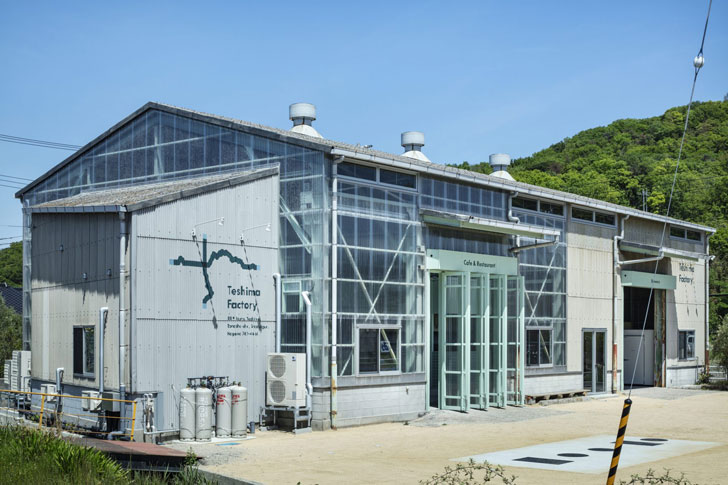
The furniture was produced through a series of islander-led workshops, a poetic nod to how the transformed space will serve the island.
“This cafeteria has become a new place for communication,” Schemata Architects write, “where islanders and tourists gather to enjoy the island’s cuisine.”
You may also like: This abandoned office building was transformed into a floating bookstore — and you'll never want to leave
Header image by Kenta Hasegawa for Schemata Architects
